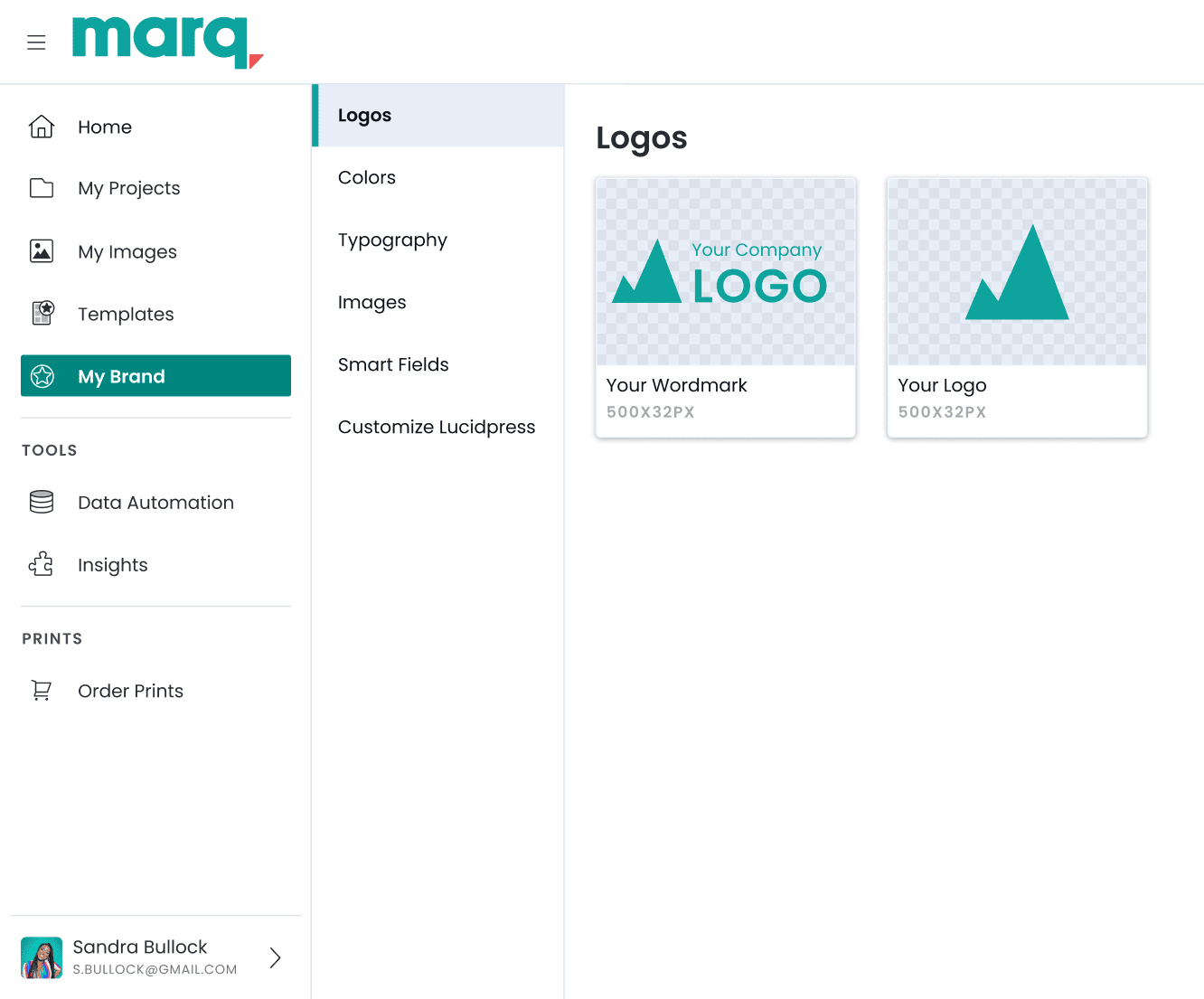
Marq (formerly Lucidpress): Complete Buyer's Guide
Enterprise brand governance platform
Marq represents a governance-first approach to design automation, prioritizing brand consistency and template control over generative AI creativity. The platform's core strength lies in template locking mechanisms that prevent brand deviation while enabling distributed teams to create compliant marketing materials[119][137].
Market Position & Maturity
Market Standing
Marq occupies a specialized governance niche within the broader design automation market, positioning itself as an enterprise brand control platform rather than a comprehensive creative solution.
Company Maturity
Business maturity indicators include established enterprise customer relationships and proven deployment capabilities across complex organizational structures.
Growth Trajectory
Growth trajectory evidence remains limited in available research, though enterprise partnerships and complex customer implementations suggest stable operational capacity.
Industry Recognition
Market validation emerges through enterprise customer adoption including UScellular partnerships and implementations across distributed organizations like MHA Senior Care's 16,000+ locations[120][140][162].
Strategic Partnerships
Strategic partnerships with enterprise CRM systems and data providers indicate ecosystem integration focus, though specific partnership details require verification.
Longevity Assessment
The platform's focus on governance-heavy use cases provides defensible market positioning but potentially constrains total addressable market compared to broader design platforms.
Proof of Capabilities
Customer Evidence
Enterprise-scale implementations demonstrate Marq's effectiveness in complex organizational environments. MHA Senior Care successfully unified branding across 16,000+ locations using customizable templates, achieving a 40% reduction in design review time[140][141].
Quantified Outcomes
Quantified performance outcomes include consistent reports of 50% faster brochure creation for standardized templates[128][129].
Case Study Analysis
Real estate vertical success appears through Chestnut Park Real Estate's elimination of 'rogue collateral' using locked templates, ensuring brand compliance across distributed agents[143].
Market Validation
Market adoption evidence includes G2 and Capterra ratings showing strengths in 'professional outputs' (4.5/5) and 'easy template locking' (4.3/5)[121][153][165].
Competitive Wins
Competitive displacement occurs in scenarios requiring brand control over creative flexibility.
Reference Customers
Enterprise customers like MHA Senior Care and Chestnut Park Real Estate demonstrate Marq's effectiveness in governance-heavy environments.
AI Technology
Marq's technical foundation centers on template governance architecture rather than generative AI innovation, prioritizing brand control through systematic workflow automation.
Architecture
Integration architecture supports CRM connectivity through HubSpot and Salesforce APIs, enabling auto-generation of content from deal data[125][187].
Primary Competitors
Versus Canva, Marq emphasizes enterprise governance through advanced locking and approval workflows rather than design flexibility[151][184]. Compared to Adobe Express, Marq provides comparable template control at lower per-user costs but without Creative Cloud ecosystem benefits[184].
Competitive Advantages
Primary competitive advantages center on enterprise brand governance capabilities that surpass design-focused platforms.
Market Positioning
Market positioning targets governance-heavy environments rather than creative-focused workflows.
Win/Loss Scenarios
Win scenarios occur when organizations prioritize brand compliance over creative flexibility, particularly in distributed environments requiring consistent output across multiple users or locations.
Key Features

Pros & Cons
Use Cases
Integrations
Pricing
Featured In Articles
How We Researched This Guide
About This Guide: This comprehensive analysis is based on extensive competitive intelligence and real-world implementation data from leading AI vendors. StayModern updates this guide quarterly to reflect market developments and vendor performance changes.
206+ verified sources per analysis including official documentation, customer reviews, analyst reports, and industry publications.
- • Vendor documentation & whitepapers
- • Customer testimonials & case studies
- • Third-party analyst assessments
- • Industry benchmarking reports
Standardized assessment framework across 8 key dimensions for objective comparison.
- • Technology capabilities & architecture
- • Market position & customer evidence
- • Implementation experience & support
- • Pricing value & competitive position
Research is refreshed every 90 days to capture market changes and new vendor capabilities.
- • New product releases & features
- • Market positioning changes
- • Customer feedback integration
- • Competitive landscape shifts
Every claim is source-linked with direct citations to original materials for verification.
- • Clickable citation links
- • Original source attribution
- • Date stamps for currency
- • Quality score validation
Analysis follows systematic research protocols with consistent evaluation frameworks.
- • Standardized assessment criteria
- • Multi-source verification process
- • Consistent evaluation methodology
- • Quality assurance protocols
Buyer-focused analysis with transparent methodology and factual accuracy commitment.
- • Objective comparative analysis
- • Transparent research methodology
- • Factual accuracy commitment
- • Continuous quality improvement
Quality Commitment: If you find any inaccuracies in our analysis on this page, please contact us at research@staymodern.ai. We're committed to maintaining the highest standards of research integrity and will investigate and correct any issues promptly.